Biggest cricket stadiums in Australia
By Arjit - January 9, 2021 - Last updated on Jan 11, 2022 08:30 PM
Biggest Cricket Stadiums in Australia
Australia is one of the oldest cricket members and Also the most successful cricket teams of the world, Who win 4 cricket world cup. But today we are not going to talk about these achievements of the Australian team in this post. In this, we are going to talk about the cricket stadium in Australia.
A Summary of the Biggest Cricket Stadiums in Australia
| Rank | Stadium | Capacity | City |
|---|---|---|---|
| 1 | Melbourne Cricket Ground | 100,000 | Melbourne |
| 2 | Perth Stadium | 60,000 | Perth |
| 3 | Adelaide Oval | 53,583 | Adelaide |
| 4 | Docklands Stadium | 48,003 | Melbourne |
| 5 | Sydney Cricket Ground | 48,000 | Sydney |
| 6 | The Gabba | 42,000 | Brisbane |
| 7 | Kardinia Park | 36,000 | Geelong |
| 8 | York Park | 21,000 | Launceston |
| 9 | North Sydney Oval | 20,000 | Sydneyc |
| 10 | WACA Ground | 18,000 | Perth |
1):Melbourne Cricket Ground
The Melbourne Cricket Club, founded in 1838 was forced to move several sites, before it could finally choose the current location, in Yarra Park, Melbourne, Victoria, to build the epic Melbourne Cricket Ground (MCG) stadium in 1853. The MCG currently is the largest cricket stadium on earth and it is also the 11th largest stadium in the world. Cricket, Rugby, and Australian Rules Football are the major sporting events held regularly at the MCG, while it has also played host to the 1956 Summer Olympics, the 2006 Commonwealth Games, and a few of the FIFA World Cup qualifier games.
The MCG is colloquially referred by the locals as The G. Due to safety measures, the MCGs capacity, which was well over 100000, was reduced to its current arrangement. The MCG gave birth to the Test match format on March 15, 1877, when Australia and England took on each other in a timeless match. Since then, the ground has been center-stage to over 100 Test matches, including the famous Boxing Day Test match, which is held every year on December 26. Interestingly, crickets first ODI match was also held at the MCG.
The 171m x 146m field at the MCG is surrounded by four stands - Great Southern Stand, MCC Members Reserve, Olympic Stand, and Ponsford Stand - named in honor of Victorian batsman Bill Ponsford. From the first wooden members stand in 1854, the MCG has seen a series of enhancements to take its current shape. The infamous Bay 13, known as one of the worst behaved sections in the cricketing fraternity, is a part of the Southern Stand.
The first scoreboard at the MCG was built in 1882. Since then, it has taken many forms and is currently the best and the largest scoreboard available in Australia - state-of-the-art LED-high-definition screen which is 25.24 metres wide and 13.17 metres high. The current facility enables one to see both, batting and bowling cards on one screen. Also, it was at the MCG that Australias first full colour video scoreboard was put in place. The worlds first all-colour cricket scoreboard with instant replays was installed at the MCG.

FACTS
| Opened | 1854 |
| Capacity | 100000 (approx, including standing room) |
| Known as | The MCG, The "G" |
| Dimensions | 172.9m long, 147.8m wide |
| Ends | Members End, Great Southern Stand End |
| Location | Melbourne, Australia |
| Time Zone | UTC +11:00 |
| Home to | Australia, Victoria |
| Other Sports it is home to | Australian Rules Football, Soccer, Rugby Union, Rugby League, Lawn Bowls, Squash |
| Floodlights | Yes |
| Curator | Tony Ware |
STATS - TEST
| Total matches | 113 |
| Matches won batting first | 56 |
| Matches won bowling first | 40 |
| Average 1st Inns scores | 311 |
| Average 2nd Inns scores | 311 |
| Average 3rd Inns scores | 253 |
| Average 4th Inns scores | 172 |
| Highest total recorded | 624/8 (142 Ov) by AUS vs PAK |
| Lowest total recorded | 36/10 (23.2 Ov) by RSA vs AUS |
STATS - ODI
| Total matches | 149 |
| Matches won batting first | 72 |
| Matches won bowling first | 73 |
| Average 1st Inns scores | 222 |
| Average 2nd Inns scores | 196 |
| Highest total recorded | 344/8 (50 Ov) by ICCWXI vs ASIAXI |
| Lowest total recorded | 94/10 (31.7 Ov) by ENG vs AUS |
| Highest score chased | 308/5 (48.5 Ov) by ENG vs AUS |
| Lowest score defended | 173/9 (50 Ov) by AUS vs WI |
STATS - T20
| Total matches | 14 |
| Matches won batting first | 6 |
| Matches won bowling first | 7 |
| Average 1st Inns scores | 142 |
| Average 2nd Inns scores | 128 |
| Highest total recorded | 184/4 (20 Ov) by AUSW vs INDW |
| Lowest total recorded | 74/10 (17.3 Ov) by IND vs AUS |
| Highest score chased | 172/5 (20 Ov) by SL vs AUS |
| Lowest score defended | 127/10 (18.4 Ov) by AUS vs PAK |
2): Perth Stadium, Perth
Perth Stadium, also known by naming rights sponsorship as Optus Stadium, is a multi-purpose stadium in Perth, Western Australia, located in the suburb of Burswood. It was completed in late 2017 and officially opened on 21 January 2018. The stadium has a capacity of over 60,000 people, making it the third-largest stadium in Australia (after the Melbourne Cricket Ground and Stadium Australia). The stadium can be extended up to 65,000 seats for rectangular sports.
Perth Stadium is primarily used for Australian rules football and cricket. Perths two Australian Football League (AFL) teams – the Fremantle Football Club and the West Coast Eagles – relocated their home games from Subiaco Oval to Perth Stadium, while the Perth Scorchers play their Big Bash League home games at the venue, having previously played at the WACA Ground..
Perth Stadium was built by a consortium led by Multiplex. The announcement of the Burswood location in June 2011 followed a series of earlier proposals for the stadium, including locations in Subiaco and East Perth.

FACTS
| Capacity | 60000 |
| Location | Perth, Australia |
| Time Zone | UTC +08:00 |
| Floodlights | Yes |
STATS - TEST
| Total matches | 2 |
| Matches won batting first | 2 |
| Average 1st Inns scores | 371 |
| Average 2nd Inns scores | 224 |
| Average 3rd Inns scores | 230 |
| Average 4th Inns scores | 155 |
| Highest total recorded | 416/10 (146.2 Ov) by AUS vs NZ |
| Lowest total recorded | 140/10 (56 Ov) by IND vs AUS |
STATS - ODI
| Total matches | 2 |
| Matches won batting first | 1 |
| Matches won bowling first | 1 |
| Average 1st Inns scores | 205 |
| Average 2nd Inns scores | 200 |
| Highest total recorded | 259/10 (47.4 Ov) by ENG vs AUS |
| Lowest total recorded | 152/10 (38.1 Ov) by AUS vs RSA |
| Highest score chased | 153/4 (29.2 Ov) by RSA vs AUS |
| Lowest score defended | 259/10 (47.4 Ov) by ENG vs AUS |
STATS - T20
| Total matches | 1 |
| Matches won bowling first | 1 |
| Average 1st Inns scores | 106 |
| Average 2nd Inns scores | 109 |
| Highest total recorded | 109/0 (11.5 Ov) by AUS vs PAK |
| Highest score chased | 109/0 (11.5 Ov) by AUS vs PAK |
3): Adelaide Oval, Adelaide
The Adelaide Oval nestled across the backdrop of magnificence of glorious gardens and swaying trees makes for a scenic ground.
Redevelopment of the ground between 2008 and 2014 at a cost of $575 million that involved constructing two new stands at the Southern and Eastern sides of the ground have perhaps taken away the blissful facade surrounding the stadium. However, the Northern hill, iconic Moreton Bay Figs and heritage scoreboard still give you a feeling of nostalgia.
The stadium hosted its first ODI back in 1975 when Australia took on the West Indies. Over the years, many riveting contests have taken place at Adelaide Oval, including West Indies great escape from the proverbial jaws of defeat to beat Australia by 1-run in a Test match in 1993.

FACTS
| Opened | 1871 |
| Capacity | 53,583 (including standing room) |
| Known as | The Adelaide Oval |
| Dimensions | 190.2m long, 126.2m wide |
| Ends | City End, Cathedral End |
| Location | Adelaide, Australia |
| Time Zone | UTC +10:30 |
| Home to | South Australia and Adelaide Strikers |
| Other Sports it is home to | Australian Rules Football (since 1877), Rugby League (1997-1998) as well as archery, athletics, baseball, cycling, american football, highland games, hockey, lacrosse, lawn tennis, rugby union, quoits and soccer) |
| Floodlights | Yes |
| Curator | Damien Hough |
STATS - TEST
| Total matches | 79 |
| Matches won batting first | 38 |
| Matches won bowling first | 22 |
| Average 1st Inns scores | 385 |
| Average 2nd Inns scores | 354 |
| Average 3rd Inns scores | 278 |
| Average 4th Inns scores | 213 |
| Highest total recorded | 674/10 (151.3 Ov) by AUS vs IND |
| Lowest total recorded | 82/10 (25.7 Ov) by AUS vs WI |
STATS - ODI
| Total matches | 85 |
| Matches won batting first | 46 |
| Matches won bowling first | 37 |
| Average 1st Inns scores | 230 |
| Average 2nd Inns scores | 202 |
| Highest total recorded | 369/7 (50 Ov) by AUS vs PAK |
| Lowest total recorded | 70/10 (26.3 Ov) by AUS vs NZ |
| Highest score chased | 303/9 (49.4 Ov) by SL vs ENG |
| Lowest score defended | 140/10 (49 Ov) by PAK vs WI |
STATS - T20
| Total matches | 5 |
| Matches won batting first | 3 |
| Matches won bowling first | 2 |
| Average 1st Inns scores | 181 |
| Average 2nd Inns scores | 139 |
| Highest total recorded | 233/2 (20 Ov) by AUS vs SL |
| Lowest total recorded | 146/10 (18 Ov) by SL vs AUS |
| Highest score chased | 158/9 (20 Ov) by ENG vs AUS |
| Lowest score defended | 188/3 (20 Ov) by IND vs AUS |
4): Docklands Stadium, Melbourne
Docklands Stadium, also known by naming rights sponsorship as Marvel Stadium, is a multi-purpose sports and entertainment stadium in the Docklands area of Melbourne, Victoria, Australia. Construction started in October 1997, and was completed in 2000 at a cost of A$460 million. The stadium features a retractable roof, and the ground level seating can be converted from oval to rectangular configuration.
The stadium is primarily used for Australian rules football, and was originally built as a replacement for Waverley Park. Offices at the precinct serve as the headquarters of the Australian Football League (AFL) which, since 7 October 2016, has had exclusive ownership of the venue.[4] With a capacity for 56,000 spectators for sports, the stadium is the second-largest in Melbourne, and hosts a number of other sporting events, including domestic Twenty20 cricket matches, Melbourne Victory soccer home matches, rugby league and rugby union matches, as well as special events and concerts. Seven Networks digital broadcast centre is also headquartered at the precinct.

FACTS
| Opened | 2000 |
| Capacity | 12,000 to 70,000 (Cricket: 48,000) |
| Known as | Etihad Stadium, Colonial Stadium, Telstra Dome |
| Dimensions | 170m long, 140m wide |
| Ends | Lockett End, Coventry End |
| Location | Melbourne, Australia |
| Time Zone | UTC +11:00 |
| Home to | Australia |
| Other Sports it is home to | Australian Rules, Rugby League, Rugby Union, Soccer |
| Floodlights | Yes |
STATS - ODI
| Total matches | 12 |
| Matches won batting first | 8 |
| Matches won bowling first | 3 |
| Average 1st Inns scores | 253 |
| Average 2nd Inns scores | 198 |
| Highest total recorded | 328/4 (50 Ov) by AUS vs ICCWXI |
| Lowest total recorded | 137/10 (27.5 Ov) by ICCWXI vs AUS |
| Highest score chased | 247/6 (49.4 Ov) by NZ vs AUS |
| Lowest score defended | 206/7 (50 Ov) by RSA vs AUS |
5): Sydney Cricket Ground, Sydney
The Sydney Cricket Ground (SCG) is a sports stadium in Sydney, Australia. It is used for Test, One Day International and Twenty20 cricket, as well as Australian rules football, rugby league football, rugby union, and association football. It is the home ground for the New South Wales Blues cricket team, the Sydney Sixers of the Big Bash League and the Sydney Swans of the Australian Football League. It is also the temporary home of the Sydney Roosters of the National Rugby League and the NSW Waratahs of Super Rugby, during the redevelopment of the Sydney Football Stadium. It is owned and operated by the Sydney Cricket Ground Trust, who also hold responsibility for the Sydney Football Stadium which is currently being redeveloped by the NSW Government.

FACTS
| Opened | 1854 |
| Capacity | 48,000 |
| Known as | Sydney Cricket Ground No. 1; Garrison Ground (1848-1877), Association Ground |
| Dimensions | 156m long, 154m wide |
| Ends | Paddington End, Randwick End |
| Location | Sydney, Australia |
| Time Zone | UTC +11:00 |
| Home to | New South Wales, Sydney Sixers |
| Other Sports it is home to | Australian Rules Football (Sydney Swans) |
| Floodlights | Yes |
| Curator | Tom Parker |
STATS - TEST
| Total matches | 109 |
| Matches won batting first | 47 |
| Matches won bowling first | 41 |
| Average 1st Inns scores | 317 |
| Average 2nd Inns scores | 313 |
| Average 3rd Inns scores | 252 |
| Average 4th Inns scores | 170 |
| Highest total recorded | 705/7 (187.3 Ov) by IND vs AUS |
| Lowest total recorded | 42/10 (37.3 Ov) by AUS vs ENG |
STATS - ODI
| Total matches | 159 |
| Matches won batting first | 90 |
| Matches won bowling first | 62 |
| Average 1st Inns scores | 224 |
| Average 2nd Inns scores | 189 |
| Highest total recorded | 408/5 (50 Ov) by RSA vs WI |
| Lowest total recorded | 63/10 (25.5 Ov) by IND vs AUS |
| Highest score chased | 334/8 (49.2 Ov) by AUS vs ENG |
| Lowest score defended | 101/9 (30 Ov) by AUS vs WI |
STATS - T20
| Total matches | 10 |
| Matches won batting first | 4 |
| Matches won bowling first | 5 |
| Average 1st Inns scores | 160 |
| Average 2nd Inns scores | 140 |
| Highest total recorded | 221/5 (20 Ov) by AUS vs ENG |
| Highest score chased | 200/3 (20 Ov) by IND vs AUS |
| Lowest score defended | 134/5 (20 Ov) by AUSW vs RSAW |
6): The Gabba
The Brisbane Cricket Ground, commonly known as the Gabba, is a major sports stadium in Brisbane, the capital of Queensland, Australia. The nickname Gabba derives from the suburb of Woolloongabba, in which it is located. Over the years, the Gabba has hosted athletics, Australian rules football, baseball, concerts, cricket, cycling, rugby league, rugby union, soccer and pony and greyhound races. At present, it serves as the home ground for the Queensland Bulls in domestic cricket, the Brisbane Heat of the Big Bash League and Womens Big Bash League, and the Brisbane Lions of the Australian Football League.
Between 1993 and 2005, the Gabba was redeveloped in six stages at a cost of A$128,000,000. The dimensions of the playing field are now 170.6 metres (east-west) by 149.9 metres (north-south), to accommodate the playing of Australian rules football at elite level. The seating capacity of the ground was 42,000 in 2010, which has been reduced in recent times due to new electronic scoreboards and corporate facilities.[3] For international cricket matches, the capacity is reduced to 36,000 due to new scoreboards and the addition of a pool deck, as well as wider sight screens.[4] For AFL matches the capacity is slightly larger at 37,478.

FACTS
| Opened | 1895 |
| Capacity | 42000 (approx) |
| Known as | The Gabba |
| Dimensions | 170.6m long, 149.9m wide |
| Ends | Stanley Street End, Vulture Street End |
| Location | Brisbane, Australia |
| Time Zone | UTC +10:00 |
| Home to | Queensland, Brisbane Heat |
| Other Sports it is home to | Australian Rules Football (Brisbane Lions), Rugby Union, Athletics, Baseball, Cycling, Greyhound Racing, Pony Racing, Rugby League, Soccer |
| Floodlights | Yes |
| Curator | Kevin Mitchell jnr |
STATS - TEST
| Total matches | 62 |
| Matches won batting first | 25 |
| Matches won bowling first | 23 |
| Average 1st Inns scores | 337 |
| Average 2nd Inns scores | 321 |
| Average 3rd Inns scores | 242 |
| Average 4th Inns scores | 163 |
| Highest total recorded | 645/10 (158.6 Ov) by AUS vs ENG |
| Lowest total recorded | 58/10 (12.3 Ov) by AUS vs ENG |
STATS - ODI
| Total matches | 78 |
| Matches won batting first | 34 |
| Matches won bowling first | 39 |
| Average 1st Inns scores | 228 |
| Average 2nd Inns scores | 202 |
| Highest total recorded | 324/7 (50 Ov) by AUS vs WI |
| Lowest total recorded | 71/10 (23.4 Ov) by PAK vs WI |
| Highest score chased | 309/3 (49 Ov) by AUS vs IND |
| Lowest score defended | 178/8 (50 Ov) by ENG vs AUS |
STATS - T20
| Total matches | 5 |
| Matches won batting first | 3 |
| Matches won bowling first | 2 |
| Average 1st Inns scores | 166 |
| Average 2nd Inns scores | 145 |
| Highest total recorded | 209/3 (20 Ov) by AUS vs RSA |
| Lowest total recorded | 114/10 (18.3 Ov) by RSA vs AUS |
| Highest score chased | 161/4 (18.5 Ov) by AUS vs RSA |
| Lowest score defended | 158/4 (17 Ov) by AUS vs IND |
7): GMHBA Stadium
GMHBA Stadium (traditionally known as Kardinia Park) is the home of football in Geelong and is one of the largest regional stadiums in Australia. Following the recent completion of the new Brownlow Stand, the stadium now has a capacity of 36,000.
The stadium features six grandstands and the Gary Ablett Terrace. The Players Stand has seating for 9,340. Built prior to that was the Premiership Stand (4,714 seats) and the Reg Hickey Stand on the outer wing which seats 6,098. The final stage of the redevelopment will make the stadium an all-seater venue.

Kardinia Park has had a number of names over the years following naming rights agreements including Shell Stadium, Baytec Stadium, Skilled Stadium and its current name, Simonds Stadium. As well as AFL, the venue has also played host to domestic cricket, pre-season rugby league, rugby union and soccer matches. As of 1st January 2018, the venue became GMHBA Stadium.
Home of the Geelong Cats - AFL, AFLW & VFL - the stadium also hosts some cricket matches with the Melbourne Renegades playing one BBL game per season. The Melbourne Storm (NRL) and Melbourne Renegades (Super Rugby) also play occasional pre-season matches there, and as of 2019/20, new A-League club Western Melbourne will play at least two seasons at the stadium until their new home ground is built. Itll also host matches during the 2020 ICC T20 World Cup.

FACT
| Location | Geelong, Victoria |
| Address | La Trobe Terrace, Geelong VIC 3220. Tel: 03 5225 2300 |
| Capacity | 36,000 |
| Record Crowd | 49,109 - 30/8/1952 - VFLGeelong v Carlton |
| Highest Crowd since 2003 | 32,815 - 07/09/13: AFL Finals: Geelong Cats v Fremantle |
| Lights | Yes |
| Arena Roof | No |
| Video Screen | Yes |
| Arena Dimensions | 170 x 115m |
| Opened | 1941 |
| Redeveloped | 2013 |
| Former/Other Names | Kardinia Park Shell Stadium Baytec Stadium Skilled Stadium Simonds Stadium |
| Sports Played | Australian FootballFootballCricket |
| Home Teams | Geelong Cats (AFL, AFLW, VFL)Western Melbourne (A-League) |
| Last Event | 28/12/20: A-League: Western United v Adelaide United Next Event23/01/21: A-League: Western United v Newcastle Jets |
8): York Park, Launceston
University of Tasmania Stadium (UTAS Stadium), formerly known as York Park, is a major Australian Rules Football and Cricket ground located in Launceston, Tasmania. The venue has a capacity of almost 20,000 and has been redeveloped several times with the first major revamp in 2000 to bring it up to AFL standards. This included the EE Gunns Stand - a two-level grandstand also with corporate facilities, as well as TV standard lighting.
The Hawthorn Football Club was the first AFL club to call Aurora Stadium its part-time home ground, with St.Kilda following in the Hawks footsteps later on. The ground hosted its first AFL fixture in 2003 - during this time, the ground had four grandstands on the main wing plus a social club building as well as a temporary grandstand on the outer wing, with a total capacity of around 15,000.
The next redevelopment in 2002 included the construction of terrace seating behind each of the goals and on the outer wing. Yet another redevelopment took place over the following summer which included constructing a roof over the seating in the outer three sides, this was completed in September 2003, just in time for the Rugby World Cup. Most recently, the EE Gunn stand was extended on both sides to further increase the seating capacity.

FACTS
| Location | Launceston, Tasmania |
| Address | 6A Inverma Rd, Inverma TAS 7248 |
| Capacity | 19,000 |
| Record Crowd | 20,971 - 18/06/06 AFL: Hawthorn v RichmondHighest |
| Crowd since | 200320,971 - 18/06/06: AFL: Hawthorn v Richmond |
| Lights | Yes |
| Arena RoofNo | |
| Video Screen | Yes (2) |
| Arena Dimensions | 170 x 140m |
| Opened | 1921 |
| Redeveloped | 2006 |
| Former/Other Names | York Park Aurora Stadium University of Tasmania Stadium |
9): North Sydney Oval, Sydney
North Sydney Oval is a multi-use sporting facility in North Sydney, New South Wales, Australia, owned and operated by North Sydney Council. First used as a cricket ground in 1867, it is also used for rugby league and rugby union and soccer.
The first cricket pitch was laid on 6 December 1867, making it one of the oldest cricket grounds in Australia. A simple pavilion overlooking the cricket ground was the first structure at the oval, built in 1879 and replaced in 1909.This was replaced by another pavilion which in turn was replaced by what is now the Duncan Thompson Stand in 1929.
The venue was renovated in 1931 due to complaints that the surface was like concrete and that the ground was liable to cause serious injury to players. Nonetheless, as late as the 1980s, the ground was sometimes referred to as "Concrete Park". In 1935, the timber fence was replaced by a high brick wall and concrete terrace seating 1,200 people was built.
The New South Wales Blues cricket team play regular Sheffield Shield, Ryobi Cup and Twenty20 Cricket matches at the Oval. The oval hosted the final of the inaugural Twenty20 domestic knock-out cup competition between NSW Blues and Victorian Bushrangers. It also plays home to the North Sydney Grade club. The ground was the host for 6 group matches and the final of the 2009 Womens Cricket World Cup.

FACTS
| Opened | 1894 |
| Capacity | 20,000 |
| Ends | Fig Tree End, Scoreboard End |
| Location | Sydney, Australia |
| Time Zone | UTC +11:00 |
| Home to | New South Wales, North Sydney |
| Other Sports it is home to | Rugby League (North Sydney Bears), Rugby Union (Northern Suburbs, Sydney Fleet), Soccer (Northern Spirit 1998-2004) |
| Floodlights | Yes |
STATS - T20
| Total matches | 4 |
| Matches won batting first | 2 |
| Matches won bowling first | 2 |
| Average 1st Inns scores | 172 |
| Average 2nd Inns scores | 130 |
| Highest total recorded | 226/2 (20 Ov) by AUSW vs SLW |
| Highest score chased | 164/4 (17.4 Ov) by AUSW vs NZW |
| Lowest score defended | 217/4 (20 Ov) by AUSW vs SLW |
10): WACA Ground, Perth
The WACA has been referred to as Western Australias "home of cricket" since the early 1890s, with Test cricket played at the ground since the 1970–71 season.The ground is the home venue of Western Australias first-class cricket team, the Western Warriors, and the states Womens National Cricket League side, the Western Fury. The Perth Scorchers, a Big Bash League franchise, played home matches at the ground until 2019. The Scorchers and Australian national team have shifted most matches to the nearby 60,000-seat Perth Stadium.
The pitch at the WACA is regarded as the quickest and bounciest in the world. These characteristics, in combination with the afternoon sea-breezes which regularly pass the ground (the Fremantle Doctor), have historically made the ground an attractive place for pace and swing bowlers. The outfield is exceptionally fast, contributing to the ground seeing some very fast scoring – as of February 2016, four of the nine fastest Test centuries have been scored at the WACA. The WACA has also hosted 7 scores of 99 in Test cricket - the most of any ground in the world.

FACT
| Also or formerly known as | Western Australia Cricket Association Ground |
| Established | 1893 |
| Named after Western Australian Cricket Association, owners of the ground | |
| Capacity 18,000 | |
| Playing area 149.0m long, 139.0m wide | |
| Floodlights Yes, since 1986 | |
| End names | Members End, Prindiville Stand End |
| Home teams | Western Australia, Western Australia Women |
| Other sports | Australian Rules Football, Rugby League, Rugby Union, Soccer, Baseball |
| Curator | Matt Page |
| Current local time | 22:04, Fri Jan 15, 2021 (UTC +0800) |
About US: Possible 11 Predictions
Possible 11 Provides Fantasy Predictions related to all the sports that are available in the fantasy market that includes Cricket, Football, NBA, Handball, NFL and many more.
Want to be a champion in the fantasy world? Then join our app (Download Possible 11 from Playstore) and Bookmark our website to get all the related news , Information, Playing 11 updates, Top picks , Small league teams, GL picks and many more!.

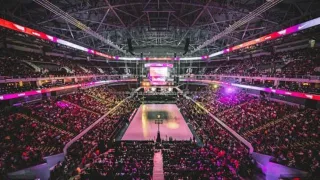
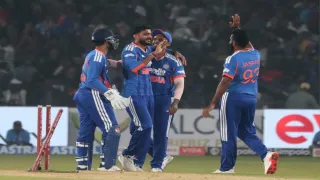

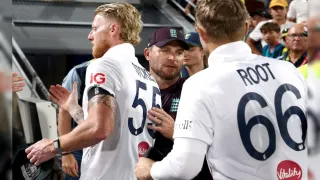

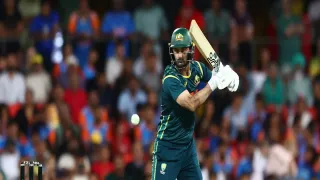
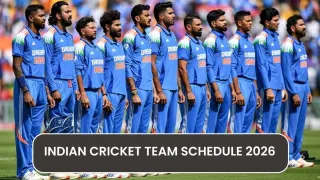
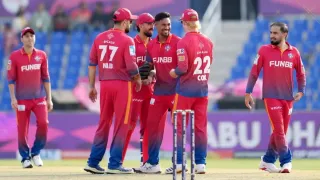
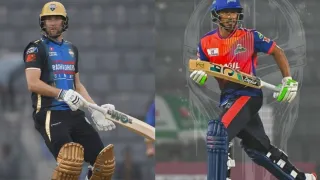

Give Your Feedback